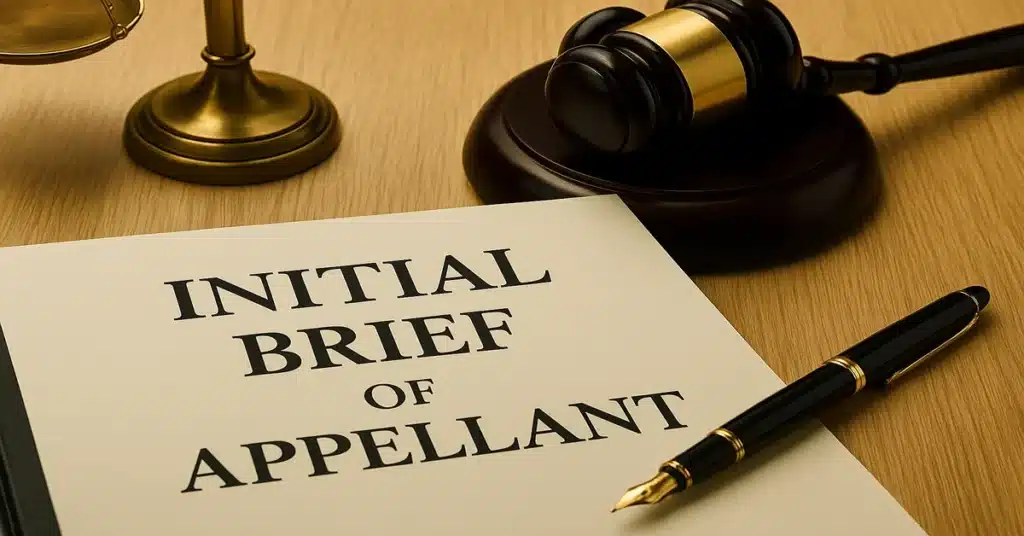If you’ve received an unfavorable judgment and are considering an appeal, the Initial Brief of Appellant is your primary tool to argue why the trial court’s decision should be reversed or modified. This document presents your legal arguments, supported by evidence and pertinent legal precedents, to the appellate court.
At Courtroom5, we offer an AI-powered Initial Brief of Appellant drafting tool designed to assist self-represented litigants in creating compelling appellate briefs tailored to their cases. This tool is available exclusively with a Courtroom5 membership.
➡ Start your Initial Brief of Appellant journey here.
What Is an Initial Brief of Appellant?
An Initial Brief of Appellant is a formal document filed by the appellant (the party appealing the trial court’s decision) that outlines the errors allegedly made by the trial court and argues for a specific remedy. A well-structured brief typically includes:
- Statement of the Case: A factual overview of the case’s background and procedural history.
- Statement of the Issues on Appeal: Specific legal questions the appellate court is asked to resolve.
- Summary of the Argument: A concise preview of the main arguments presented in the brief.
- Argument: A detailed analysis supporting your position, citing legal authorities and evidence from the trial record.
- Conclusion: A statement of the desired outcome, such as reversing the trial court’s decision.
Crafting an effective Initial Brief is crucial, as it serves as the foundation of your appeal and the primary means to persuade the appellate court.
Challenges in Drafting an Initial Brief
Self-represented litigants often face several challenges when preparing an appellate brief:
- Understanding Appellate Procedures: Navigating the complex rules and timelines governing appeals.
- Identifying Appeal-Worthy Issues: Determining which legal errors made by the trial court are viable grounds for appeal.
- Legal Research and Citation: Finding and correctly citing relevant statutes, case law, and other legal authorities.
- Effective Legal Writing: Presenting arguments clearly, concisely, and persuasively.
These challenges can be daunting, but with the right tools and guidance, you can overcome them effectively.
How Courtroom5’s AI-Powered Tool Can Assist
Our Initial Brief of Appellant drafting tool simplifies the process by guiding you through:
- Issue Identification: Helping you pinpoint and articulate the trial court’s errors that warrant appeal.
- Legal Research: Assisting in locating and applying pertinent legal precedents to support your arguments.
- Document Assembly: Ensuring your brief is properly formatted and includes all necessary components in accordance with appellate court requirements.
This tool is part of a Courtroom5 membership, which provides access to automated legal document drafting, step-by-step litigation guidance, and other essential resources for self-represented litigants.
➡ Start your Initial Brief of Appellant journey now and take a confident step toward appealing your case.



